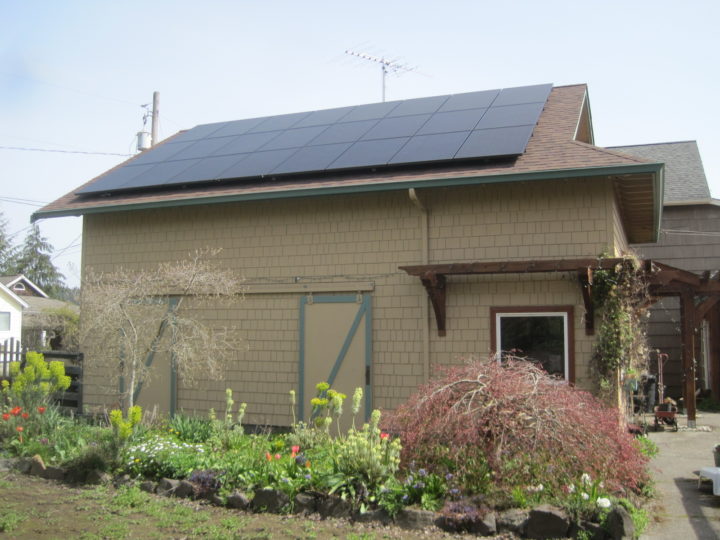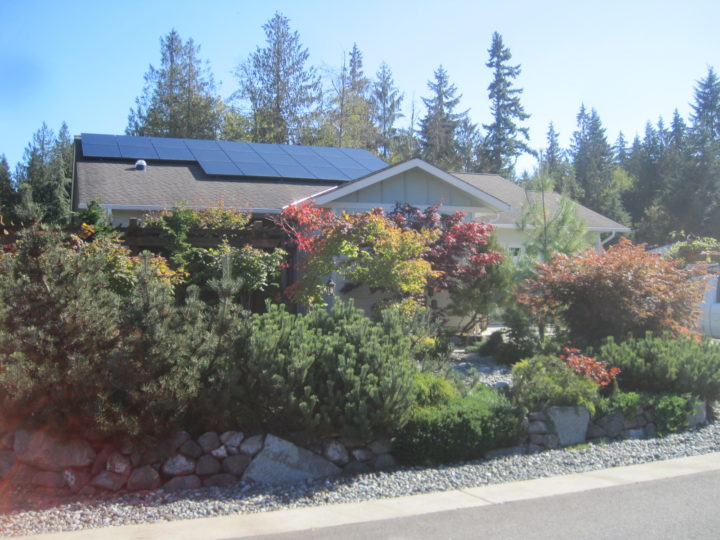SunPower Offers $1000 Gift to Sierra Club and $1000 Rebate for Homeowners
SunPower has been our favorite PV manufacturer for years. They offer the highest efficiency, highest quality, leading technology, cleanest manufacturing process, and the best warranty in the industry. Now they are offering a $1000 donation to the Sierra Club and a $1000 rebate for Homeowners on new projects.
At Power Trip Energy, we will handle the design and installation of your project, and we handle all of the paperwork for your net metering interconnection with the utility, and this rebate program. Ask us for details when you schedule your site evaluation.
While the federal government debates the Green New Deal, and our state considers a 100% Renewable Energy Portfolio Standard, you can take action now in your own home to make your own clean electricity. When people lead, the leaders follow.
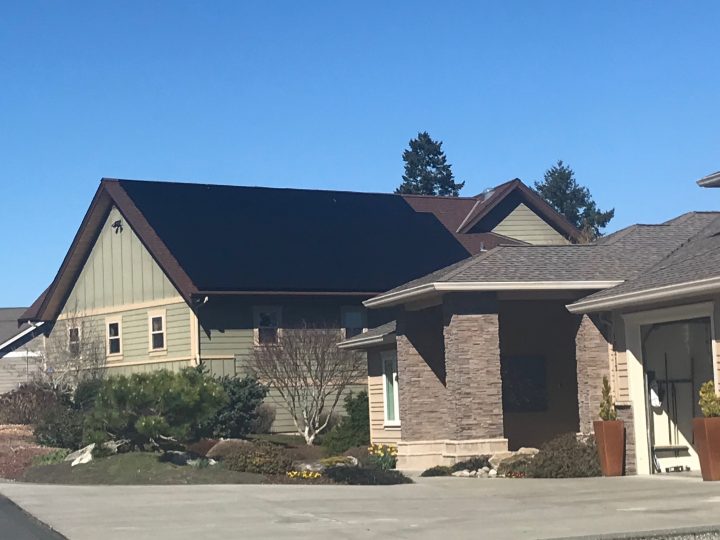
14 KW SunPower AC Modules, Keyport, WA, March 2019
Solar Fairness Act (SB 5223) passes Senate
It is important to update our state’s Net Metering law, originally passed in 1998, to reflect the current state of the market and protect homeowners’ investments in their home. The new bill would raise the cap from 0.5% to 4% and provide a path for continued investment. SB is sponsored by Sen Palumbo, and recently passed the Senate, now for consideration by the house.
We sent a letter to Sen. Van de Wege thanking him for his vote.
Subject: Thank you for supporting the Solar Fairness Act (Senate Bill 5223)
Body:
Dear Sen Van de Wege,
I appreciate your yes vote on the Solar Fairness Act to pass it out of the Senate last week.
As you know, our clients are counting on the state’s protection for the fair value of their solar electricity. That protection and guarantee of reliable fair compensation from utilities give us the ability to give the needed peace of mind to our clients while they are considering this investment in clean energy for their home and our community.
Please consider me your resource whenever I can be of any assistance to your office in matters relating to solar energy.
Best regards,
Andy Cochrane
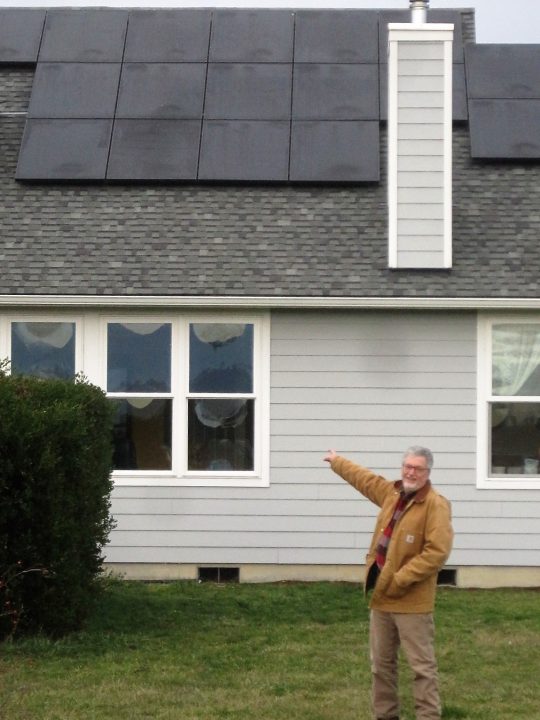
An Array of Energy Bills in Olympia this Short Session
This year in Olympia is a “short session” for our part-time legislature. Solar Washington has published a summary of the various energy-related bills, several of which have the potential to make significant progressive steps for our state. I encourage you to take a look and see which of these bills might excite you to contact your representatives. https://www.solarwa.org/washington_solar_legislation
SSB (Senate Substitute Bill) 5223 is the bill that affects homeowners considering grid-tied solar PV systems most directly by increasing the threshold of the net metered capacity required of utilities from 0.5% to 4% of the 1996 peak load. We have exceeded the current threshold in every utility district on the Olympic Peninsula, and we have seen one regressive utility mired in some backsliding that has a negative impact on our clients. This bill would incur no costs to the state or utilities and would remove the potential for impediments which discourage individuals from investing in clean energy for their homes and communities.
I encourage you to read and support this improvement to our state’s net metering, which will bring our thresholds into the 21st century.
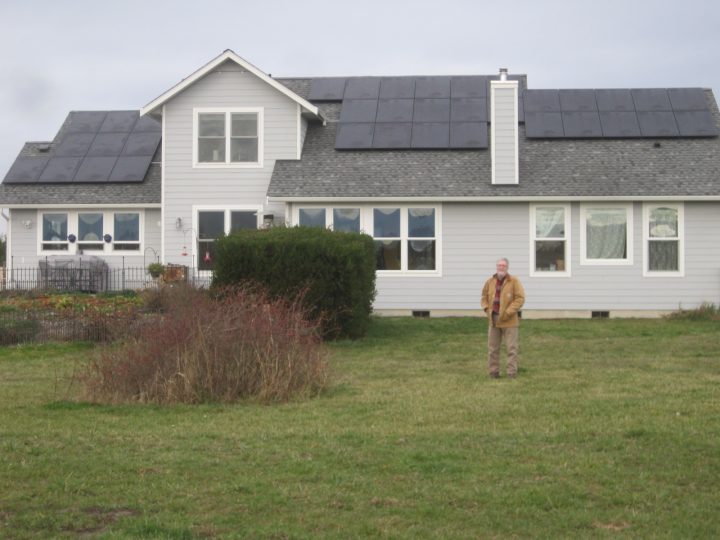
11.7 KW SunPower array – Sequim – December 2018
Clean Yard Work – A Special Offer of New Tools
Get a free Dewalt lithium yard tool of your choice or EV charging equipment when you order a solar array in the month of February.
If you are like me, you love being in your yard. Most of our clients spend a fair amount of time and energy to create beauty, perhaps grow some tasty food, and generally work to make their yards into nice outdoor spaces in which to spend time. At my place, it takes a whole lot of work to maintain that space, which I mostly enjoy, but it involves the use of some tools I don’t love. When you are outdoors you may hear a neighbor running a gasoline mower, a weed whacking string trimmer, or perhaps a landscape service running a leaf blower or hedge trimmer.
Even the use of a relatively clean four stroke engine results in the burning of gasoline and the resulting noise and pollution. At my home, I recently added a couple of lithium battery-powered electric yard tools. Some of the ones I looked at a couple of years ago seemed expensive and underpowered, but this year, one tool in particular changed my mind and has set me on the path of electric mowing and trimming.
A friend bought a DeWalt electric lithium chainsaw. I laughed to myself at first, but my mind quickly changed when he dropped a couple of trees in his woodlot. It seemed every bit as powerful as my Stihl two stroke chainsaw. True, the battery only lasted enough to cut a couple of trees, so it will not be replacing gas-powered chainsaws for professional lumberjacks anytime soon, but it seems fine for a homeowner that may use a chainsaw for maintenance and clean up or cutting a couple of trees at a time.
That motivated me to try out the new lithium electric DeWalt string trimmer and I was very impressed. I can run it for over an hour on a single charge, and that is plenty of time weed whacking at once for me at my place. Shortly after that we got a Ryobi mower and a DeWalt hedge trimmer for heavier brush cutting. These tools all work very well and fulfill my goals of keeping my yard maintained while not burning gas.
In the past, we have run specials wherein we include the installation of Electric Vehicle charging equipment at no cost with a new solar array. Getting an electric vehicle is probably the biggest change you can make concurrent with installing solar to decrease your carbon emissions. This summer, we are now going to run a special to encourage you to switch to a cleaner way of maintaining your yard.
When you order a solar pv array 4 KW or larger in the month of July, we will throw in your choice of DeWalt electric lithium mower, or a package including one DeWalt string trimmer and one hedge cutter.
If you order a larger system of 12 KW or more in the month of July, we will give the choice of either all three of those yard tools, or a Clipper Creek LCS-25 Electric Vehicle charging station (including installation.)
This offer expires July 31st.
Of course our main goal is to install solar on your home, but we also want to do everything we can to make sure we use that clean power for all we can. While there are complications and disagreements regarding the science and politics of climate change, in general we feel there are indisputable benefits to this goal:
Electrify everything, and make sure that electricity is carbon free.
To learn more, please give us a call or come on one of our upcoming solar home tours.

A – DeWalt lithium cordless 13” String Trimmer and 22” Hedge Trimmer Package (# DCST920B820P1)

B – DeWalt lithium cordless mower (# DCMW220P2)

C – Clipper Creek LCS-25 Level II EV Charging Station
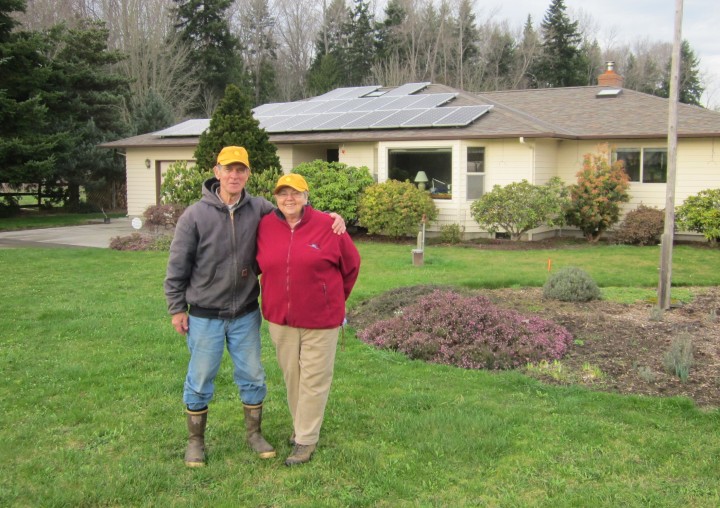
The facts about the 30% federal tax credit.
Solar Savings – everything you need to know about the federal tax credit for 2019
The federal solar tax credit, allows you to deduct 30 percent of the cost of installing a solar energy system from your federal taxes. This tax credit applies to both residential and commercial systems, and there is no cap on its value. Thanks to the federal tax credit, the average Power Trip Energy client saved over $5,000 on the cost of going solar in 2018.
What does the federal solar tax credit extension mean for the solar industry?
The federal tax credit was originally established by the Energy Policy Act of 2005 and was set to expire at the end of 2007. A series of extensions pushed the expiration date out to the end of 2016, but experts believed that an additional five-year extension would bring the solar industry to its full maturity. Thanks to the spending bill that Congress passed in late December 2015, the tax credit is now available to homeowners in some form through 2021. Here are the specifics:
- 2016 – 2019: The tax credit remains at 30 percent of the cost of the system. This means that in 2019, you can still get a major discounted price for your solar panel system.
- 2020: Owners of new residential and commercial solar can deduct 26 percent of the cost of the system from their taxes.
- 2021: Owners of new residential and commercial solar can deduct 22 percent of the cost of the system from their taxes.
- 2022 on wards: Owners of new commercial solar energy systems can deduct 10 percent of the cost of the system from their taxes. There is no federal credit for residential solar energy systems.
Additionally, in previous years, owners of new solar energy systems could not claim the tax credit unless their system was operational. Now, the legislation allows them to claim it as soon as the construction of the system is complete, as long as it is operational by December 31, 2023.
Do I qualify for the solar panel tax credit?
If you have your solar array completed by the end of 2019 you are eligible for the 30% solar tax credit. Even if you don’t have enough tax liability to claim the entire credit in one year, you can “roll over” the remaining credits into future years for as long as the tax credit is in effect.
1631’s Carbon Fees Represent A Great Opportunity
We have the opportunity to address the impacts of carbon pollution in a positive and innovative way by passing Initiative 1631 this election. By putting a fee on carbon, initially $15 per metric ton of carbon pollution, then reinvesting that money in clean energy, this program uses economic tweaks to make inefficient and dirty practices more expensive and give clean technology and practices an advantage.
The funds that are collected through the carbon fees from the largest polluters are designated for clean energy projects and habitat restoration on state lands. These will gradually have positive impacts to decrease and mitigate our state’s contribution to climate change, while providing positive economic stimulation and creating new clean energy jobs.
The program will encourage a decrease in carbon pollution, but it does not dictate steps for polluters to decrease their emissions. Washington will see innovation in clean energy technologies, leveraging our existing entrepreneurial culture and high tech work force. This is good for everybody in the state, except the petroleum industry and a few other major polluters.
Perhaps that is why the 12 largest contributors to the No on 1631 campaign are out of state petroleum companies that have donated over $21 million to defeat this initiative – including Phillips 66, BP, Chevron, Valero, and Koch Industries.
1631 specifically requires that 35 percent of the fees collected will go back to low-income communities to help decrease energy costs. All investments will overseen by a public board made up of community leaders and experts in science, business, and health, so that energy companies and special interests aren’t making decisions about our future.
I feel no doubt that more carbon pricing is coming to the US in the near term. Europe’s Emissions Trading System was the first and remains the largest Cap and Trade program in the world, now over 12 years in existence. Mandatory programs in the US currently include California’s Cap and Trade program in existence for 5 years, and the mandatory market-based Regional Greenhouse Gas Initiative, which includes 9 Northeastern states.
Initiative 1631 is a much simpler and more directly effective measure, and I hope we can seize this opportunity here in Washington.
The economics of carbon are coming one way or another in our near future – we can either lead, follow, or get run over by more innovative states. I choose to lead, and Initiative 1631 is the tool we need right now.
References:
California Cap and Trade – https://www.arb.ca.gov/cc/capandtrade/capandtrade.htm
Regional Greenhouse Gas Initiative – https://www.rggi.org/
Public Disclosure Commission showing campaign contributions – https://www.pdc.wa.gov/browse/campaign-explorer/committee?filer_id=NO1631%20507&election_year=2018
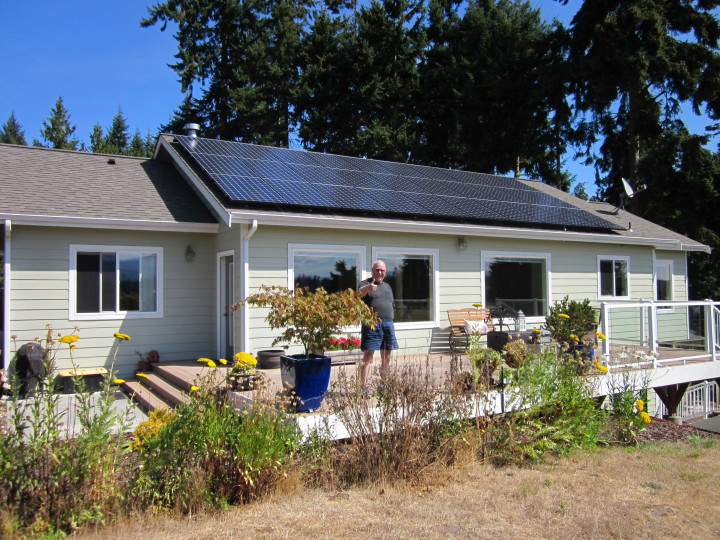
Clallam PUD Sides with Petroleum Industry in Opposition to Carbon Initiative
The Clallam PUD board of commissioners has taken the step of publicly opposing Initiative 1631, citing increased operating costs and higher gasoline prices as reasons for opposition. Clallam County PUD officials say the carbon fee initiative would increase the district’s annual fuel and shipping costs by $20,000 in 2020 and by $51,000 by 2035. Clallam PUD’s revenue is about $75 million per year, so the initial $20,000 projected increase in 2020 amounts to approximately 0.027% of the PUD’s revenue.
The PUD Commissioner Simpson also reportedly was concerned about negative impacts to the PUD from a wider adoption of electric vehicles. “There’s impact on any utility of upgrading their system to accommodate the charging of batteries for electric cars,” Simpson said.
We suggest the PUD Commissioners look at the migration from gasoline to electricity as major transportation fuel as an opportunity to increase PUD revenues and decrease money leaving the community through gasoline expenditures. No gasoline or diesel is created in Clallam County, whereas there are over 750 roof top solar arrays producing clean electricity. Expansions in electrical generation will result in positive local economic activity and prevent money leaving the community for polluting fossil fuels. The increased revenues can be re-invested in our public electrical infrastructure. The PUD’s job is to help navigate to a more advantageous position in a cleaner future, not to oppose any change due to fear of increased costs without a vision of the benefits of capturing more of the energy economy locally.
We see many benefits of cutting out petroleum and carbon based industries, while capturing those revenues locally and building a cleaner future. This is the reason we stand with hundreds of businesses, tribes, unions, and faith-based organizations in favor of 1631. Learn more about this initiative here http://yeson1631.org
Why is Clallam PUD siding with the petroleum industry in opposition to a carbon fee? Could they better represent their ratepayers by focusing on the most beneficial way to move forward toward a cleaner future?
peninsuladailynews.com/politics/clallam-pud-opposes-carbon-fee-initiative/
SunPower’s High Efficiency Maxeon Cells Exempted From Tarriffs
SunPower, a California based company that makes their PV cells in the Philippines, has been subject to the same solar tarriffs as the rest of the industry, despite arguing that they were materially different from the cheap commodity imports, protection from which was the point of the tarriffs. SunPower has been paying $2 million per week in tarriffs, which they say could have been better spent on research and development here in the US.
Today they received notice that the tariffs would not be applied to their “inter-digitated back contact” (IBC) Maxeon cells, which are in the most efficient solar modules on the market.
There are two other big recent news item from SunPower:
They have announced a 5 year strategic partnership with Enphase, the worlds largest micro-inverter manufacturer. SunPower had been manufacturing their own micro-inverters since their purchase of SolarBridge several years ago, and have sold that facility to Enphase, who will use it to expand their own production capabilities. The Enphase micro-inverters will be incorporated into SunPower’s AC modules for products we receive beginning in the fourth quarter of this year.
Secondly, SunPower’s purchase of SolarWorld Americas is closing soon, and in this, SunPower has purchased the largest North American manufacturing location and will produce their own product as well as the SolarWorld modules for the German parent company.
As the solar market matures, we see complexity and consolidations, and we are very happy to see SunPower taking the steps it needs to remain a global leader in solar manufacturing. We have been SunPower dealers since 2008, and we appreciate their highest efficiency, strongest warranty, and stable market position. They now comprise nearly 100% of our installations.
https://solarindustrymag.com/sunpower-announces-solar-tariff-exemption/.
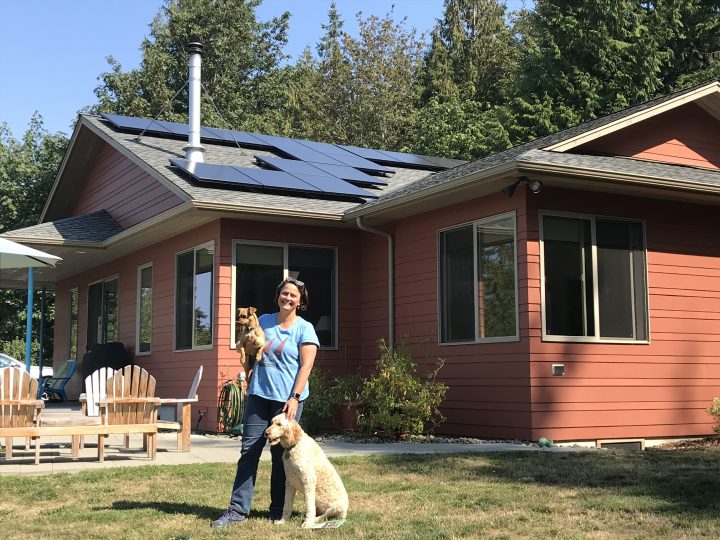
11.4 kw in Port Townsend, working around some tree and chimney shading with SunPower modules.
Solar’s Connection to Our Orcas
In April I started working for Power Trip Energy Corp. In July we put an 8.38 kW solar PV array installation on the roof of our house. David and I were initially thinking of ourselves, really. We love the idea of getting energy for free and in putting a solar system on our roof we understand the economic benefit to our household’s bottom line but in my heart of hearts I wanted to believe we were making a difference in the bigger picture. I want to see that we are having a positive impact on the bad news that surrounds us on a daily basis.
In this very green minded corner of the world we worry about climate change, forest fires, drought and severe storms. We worry about the future availability of resources and the equity of their management and dis
tribution. We conserve, we recycle, take our own bags shopping where we buy local and organic. We understand the true costs of goods and services but this is not enough. We all know it isn’t enough.
Like many of you, I followed the recent story of the grieving mother orca with a heavy heart and a morbid fascination. The many conversations surrounding the news reflected my feelings that this story is yet another sign of what will be more disastrous news to come for all species. The unhealthy conditions of what should be pristine waters of the Puget Sound fills me with embarrassment and overwhelms me with thoughts of helplessness but this recent ecological hit so close to home has stiffened my resolve to do more. My commitment to clean energy and to the removal of Hydroelectric dams is high on my priority list and I’m hoping to share information and learn from anyone who is willing to converse on the subject.
We have always believed ourselves lucky to have such an abundant, affordable resource for energy in the form of Hydroelectricity, but upon closer examination the unforeseen and true cost of cheap electricity become more apparent. There are studies showing that in addition to the dams impeding the passage of fish there is also damage to the habitat upstream effecting many species. The river’s temperature is altered, oxygen levels are changed, land being cleared and flooded causes methane gasses to be released, contributing to global warming.
Rising greenhouse gas emissions and a warming world affect the entire hydrological cycle—surface and ground water, glaciers, precipitation, runoff and evaporation. Shifting precipitation patterns and increased droughts are changing water levels in rivers and behind hydro dams.
The solar PV array we installed affords me a small bit of relief from the guilt of our modern life. With the on-line reporting that came with our system I see an accumulation of numbers I can feel good about. The system tells me the amount of energy our system produced and the equivalent of miles not driven that equates to, the amount of CO2 not pumped into the atmosphere. The coal not burned, etc. These number are not exact, and a little generic or presumptive – but none the less I plan to celebrate this as a success.
Some of you may argue that to produce the solar panels was not without pollution or without harvesting of precious resources. Which is true, but I can also rest a bit easier in the knowledge that the solar PV array we installed was manufactured and certified as the most sustainable available. The manufacturer; SunPower is a B-Corp! Look it up if you are unfamiliar, it is something worth knowing more about – https://bcorporation.net/
Maybe you’ll make the argument that it’s expensive – you’re not wrong and we are not wealthy. Here’s how we made it work within our budget. We took advantage of a low interest loan specific to energy efficiency upgrades through Puget Sound Cooperative Credit Union. Our plan includes applying the incentive money coming back to us; 30% federal tax credit on the cost of the system and the annual payment we will receive from the Washington State incentive program at $0.14 per kilowatt produced, to the loan allowing us to pay it off in a shorter time. We will also see a reduction in our monthly electricity bills as we will get to use the power we generate first, the excess will be purchased by our local public utility at the current market rate, so our monthly utility bill will be reduced and that previously budgeted money can be applied to the loan too. We anticipate paying the 10-year loan off in 8 years without ever being stressed by the monthly payments.
I hope that you will agree that as humans we need to examine our lifestyle and the modern conveniences we all feel entitled to. We need to see our individual responsibilities in the endeavor to bring about the change we want to see. We must recognize our individual opportunities to participate in the solutions, celebrate the successful changes we make and continue to reach-out and bring others on-board.
How can it happen if you and I are not making it happen?
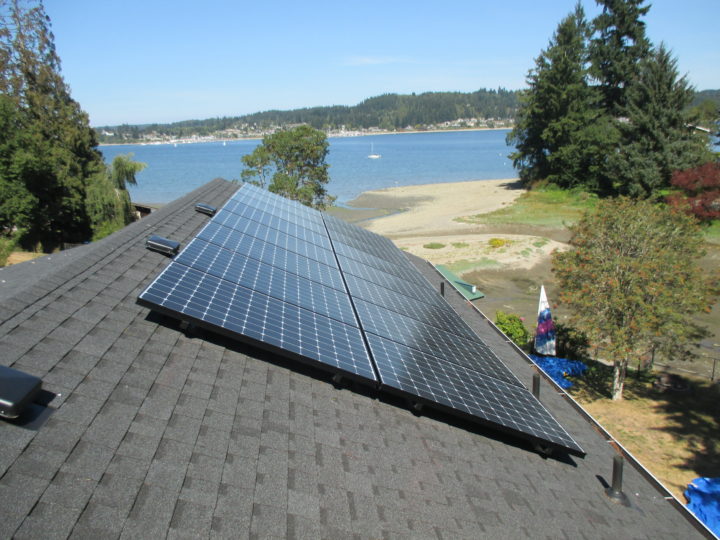
Solar is Sexy, Financing Is Not Sexy
Solar is Sexy, Financing Is Not Sexy
Unless you are in the business of helping people put a solar array on their homes, you might not think much about some of the other things that have to line up for these projects to make sense. The technology itself is fairly straightforward, but some other significant factors that support these projects are:
- Utility policy and the state laws that allow or prevent obstruction of solar installation
- Natl. Electric Code that supports solar photovoltaic (PV) equipment and provides guidance for safe installations
- Federal tax policy recognizing the value of clean energy
- State laws preventing HOA’s from interfering with the installation of solar
- Sensible loan packages in the case someone needs outside financing
Here in Washington State, we are blessed with a confluence of these factors that all come together making the installation of solar PV relatively attractive for our clients. At this moment I would especially like to give appreciation to two local credit unions for putting together some very low interest energy efficiency financing programs, and the WA State Dept of Commerce, which has implemented a program enabling these loans in partnership with the credit unions.
Until a few years ago, we did not have any attractive credit options to recommend for our clients. The only option our state’s solar industry had was consumer credit along the lines of how you might finance an appliance, perhaps from GE Capital, and those loans were not anything we would ever recommend to our clients. Within the last couple of years however, we now have some excellent low interest rate, long term financing designed specifically for these projects and some of the other incentives they receive.
Both Puget Sound Cooperative Credit Union and Generations Credit Union have received high reviews from our clients that have used these loans. The rates are low and the terms are variable to work with your needs. The key is that each of these loans is supported through a loan guarantee from WA Dept of Commerce, and each is structured to work specifically with other available incentives in order to maximize the economic benefits of the solar electricity being made on your roof.
At this point, nearly 1/3 of our customers are using financing from one of these two credit unions. Puget Sound Cooperative Credit Union has let us know they are writing solar loans for solar at the pace of of $2 Million per month. That is a lot of solar here in Washington State, and that is a big turn on.
So for some of us solar geeks, financing actually can be sexy. Links to each credit union’s program is below.
https://www.psccu.org/Borrow/Energy-Smart-Loans.aspx
https://www.generationscreditunion.com/solar-cash-flow-loan.htm
